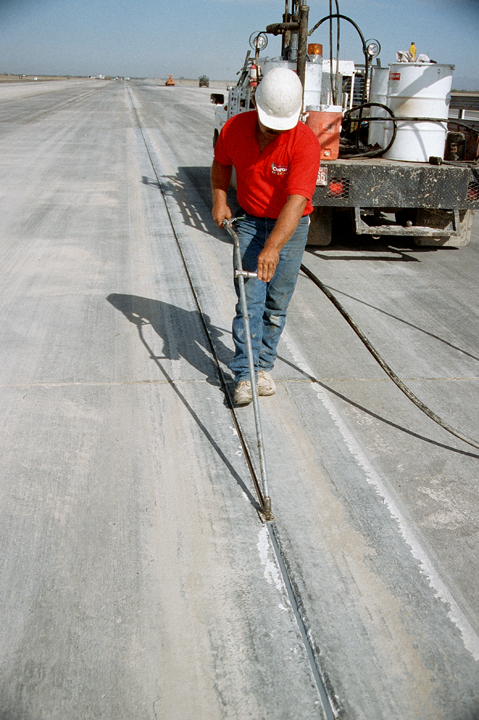
What: Joint sealing on PCC pavements is a preventive technique using either a hot pour polymer asphalt sealer or a silicone sealer. The hot-poured, rubberized asphalt sealants are less expensive than silicone materials but generally have shorter life expectancies (typically 4 to 8 years for hot-poured sealants and 5 to 10 years for silicone sealants). A backer rod is often placed in the joint reservoir to achieve the desired shape factor and to control the amount of sealant used. Joint resealing seals PCC joints against moisture and debris (incompressibles). Before sealing, the cracks or joints should be cleaned of debris and dry.
Where: All jointed concrete pavements with no or failed joint sealer.
Why (advantages): Joint resealing prevents moisture and incompressibles from intruding into pavement joints. By sealing out incompressibles, joint sealing reduces spalling and blow-ups; and by sealing out water, it reduces pumping, faulting and corner breaks and protects the base from moisture erosion. Traffic return for joint sealing is quick, as soon as the sealer has cooled or cured sufficiently to avoid tracking. Joint resealing is a very inexpensive technique for preserving and extending the lives of concrete pavements.
Why not (disadvantages): The only reason for not joint sealing a jointed concrete pavement is when the distresses are too great to further maintain the slab and more aggressive repair is needed.

When: Joints should be resealed when the existing sealant material is no longer performing its intended function, as indicated by missing or debonded sealants or sealed joints that contain incompressibles. The optimum time of the year to perform joint resealing is in the spring or fall, when the installation temperatures are moderate.
Estimated life extension: Joint sealing can extend the life of PCC pavements from 5 to 20 years.

For more information on correct joint sealing techniques, consult the Joint Seal Checklist put together by the Foundation and FHWA.
